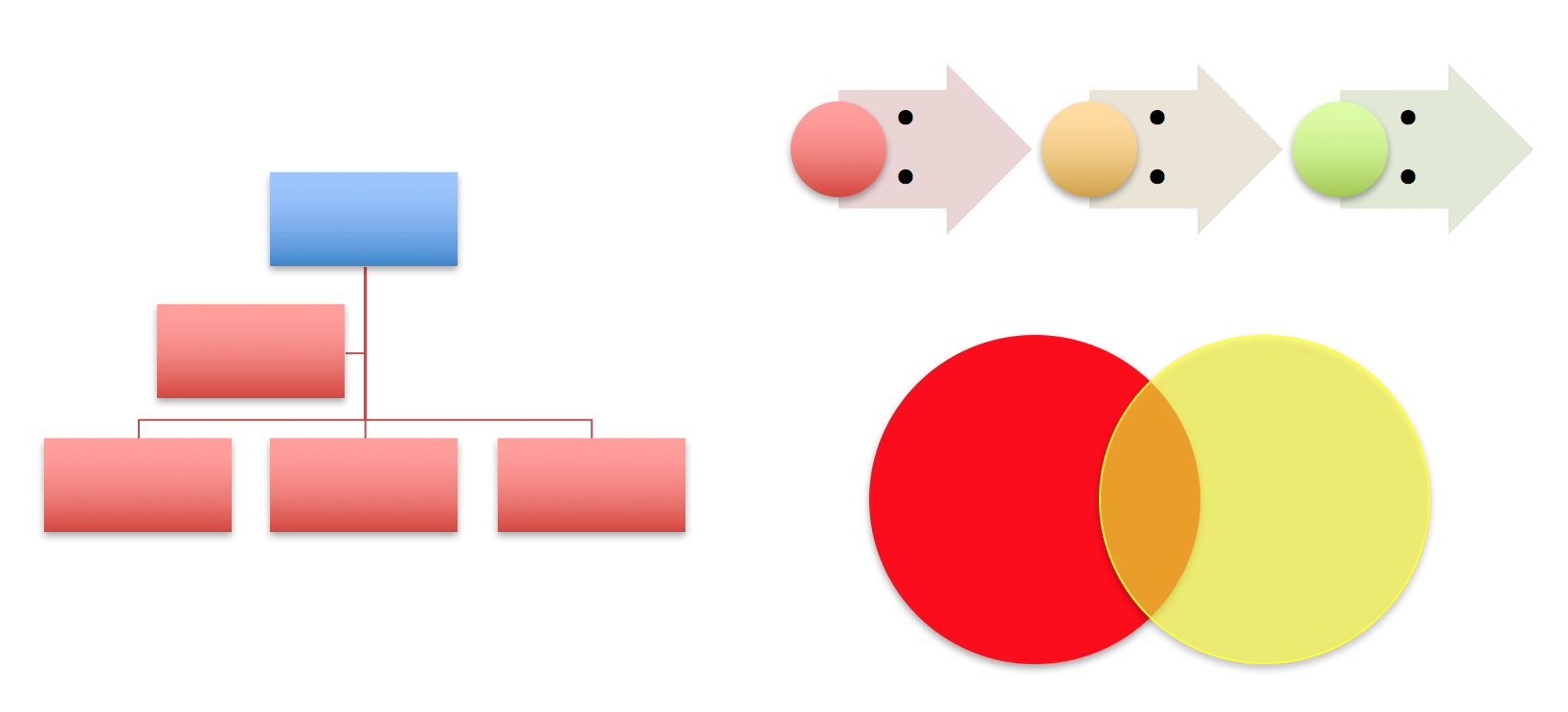Integration Processing: Making Sense of the Information We Receive
Students are often juggling information, trying to understand what they are learning while also trying to make connections with additional knowledge or background knowledge. Understanding concepts often means understanding relationships between bits or chunks of knowledge. This can be as basic as sequencing events in an order, such as a time line, or it may require putting abstract concepts together to infer meaning, see a bigger picture.
Many students struggle with integrating information. Sometimes visualizing the process by putting it on paper can help. Our brains tend to "think" in patterns and using visual representations of how bits of information relate to each other gives students a way to externalize their thinking. Consider these images:

Each graphic represents a different way of connecting information and we tend to recognize the differences. One shows a hierarchy, one shows a process or progression, and one shows how information can overlap with parts being different and parts being similar or shared. This is an example of externalizing how we think, and once it is on paper or a computer screen students can use these tools to integrate ideas, concepts, and information.
Strategies for supporting integration processes.
|
- Infographics for Teachers - http://www.educatorstechnology.com/search/label/infographic%20making%20tools . infographics can be a great tool to provide students with the big picture and sequence of information.
- TeachersFirst: Infographics - http://www.teachersfirst.com/iste/infographics/resources.cfm
- Student Infographics - http://www.teachersfirst.com/iste/infographics/examples.cfm
- Free Printable Graphic Organizers - https://www.teachervision.com/graphic-organizers/printable/6293.html?s2
- Intel: Tools for Student-Centered Learning - http://www.intel.com/content/www/us/en/education/k12/teachers.html . a collection of tools that students can use to organize ideas and develop the rationale for an argument.
- Inspiration & Kidspiration - http://www.inspiration.com/ . excellent graphic organizer tools
- Popplet - http://popplet.com/ . online and iPad tool for organizing thoughts through mind maps, word walls, etc.
- MindMup - http://www.mindmup.com/ . a free, quick and easy online mind mapping tool
- Rationale - https://www.rationaleonline.com . software that guides a student in argumentative writing
- Tiki-Toki - http://www.tiki-toki.com/ . create beautiful, interactive online timelines.
- Timeline from readwritethink - http://www.readwritethink.org/files/resources/interactives/timeline_2/ . a free online tool that can be used to sequence events that are not calendar based
- Timetoast - http://www.timetoast.com/ . an online time line tool that quickly switches from timeline to text views.
- Reading & Study Digital Tools - http://www.tlc-mtss.com/assets/digital_tools.pdf . digital PDF book with instructions on how to use comment features, mark-up features, text-to-speech, and more in a variety of programs
- Read:Outloud Outline Templates - http://donjohnston.com/readoutloud-resources . outlines for use with Read:Outloud that guide the student through mental models such as K-W-L, Prediction, Main Ideas, etc.
- OmniOutliner - http://www.omnigroup.com/omnioutliner . a feature rich outlining writing tool for the Macintosh and iPad.
Return to Activities | Return to Classroom Implementation | Return to Home Page